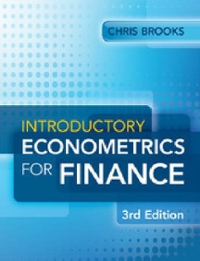How do I calculate these to end up with the correct answer highlighted in Green?



The expected market return is 8%, the risk-free rate is 2%, and the beta of a large cap stock is 1.0. The large cap stock pays a dividend of $1/year and the dividend does not change. If the risk-free rate and expected market return decrease by 1% and no other variables in the security market line equation change, what happens to the price of the large cap stock? It doesn't change. The stock decreases by $1.79. The stock decreases by $1.00. The stock increases by $1.79. The expected market return is 8%, the risk-free rate is 2%, and the beta of a large cap stock is 1.0. The large cap stock pays a dividend of $1/year and the dividend does not change. If the expected market return increases from 8 to 10% and no other variables in the security market line equation change, what happens to the price of the large cap stock? It decreases by $2.50. It doesn't change. It decreases by $2.00. It increases by $2.00. A company is comprised of 50% bonds, 50% equity, and the beta of the bonds is 0.0 and the beta of the equity is 1.2. If the company's structure changes so that it is now 75% bonds and 25% equity, what happens to the beta of the company's assets? It increases by 0.9 It increases by 0.3 It remains unchanged It decreases by 0.3 The expected market return is 8%, the risk-free rate is 2%, and the beta of a large cap stock is 1.0. The large cap stock pays a dividend of $1/year and the dividend does not change. If the risk-free rate and expected market return decrease by 1% and no other variables in the security market line equation change, what happens to the price of the large cap stock? It doesn't change. The stock decreases by $1.79. The stock decreases by $1.00. The stock increases by $1.79. The expected market return is 8%, the risk-free rate is 2%, and the beta of a large cap stock is 1.0. The large cap stock pays a dividend of $1/year and the dividend does not change. If the expected market return increases from 8 to 10% and no other variables in the security market line equation change, what happens to the price of the large cap stock? It decreases by $2.50. It doesn't change. It decreases by $2.00. It increases by $2.00. A company is comprised of 50% bonds, 50% equity, and the beta of the bonds is 0.0 and the beta of the equity is 1.2. If the company's structure changes so that it is now 75% bonds and 25% equity, what happens to the beta of the company's assets? It increases by 0.9 It increases by 0.3 It remains unchanged It decreases by 0.3









